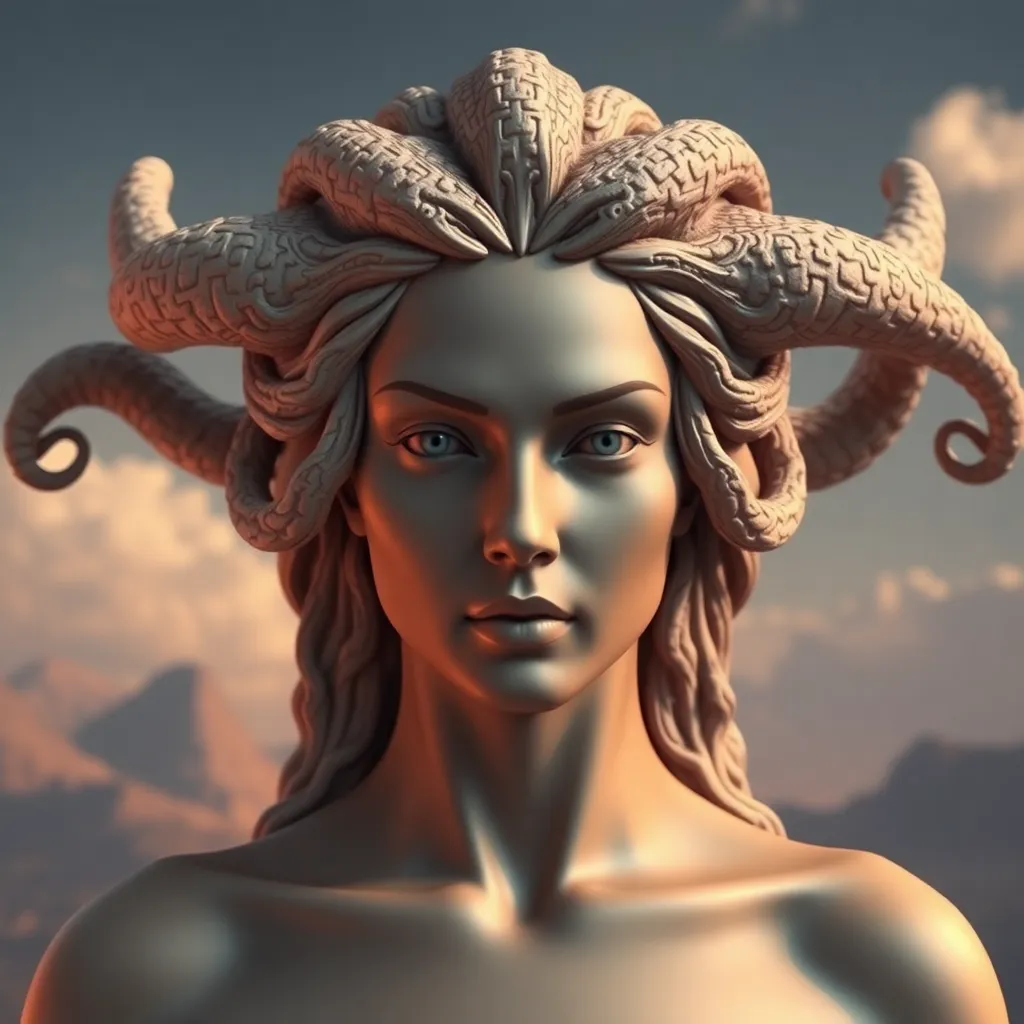The Gorgon’s Gaze: Exploring the Fear of the Female Figure
I. Introduction
The myth of the Gorgon, particularly Medusa, is a profound narrative in ancient Greek mythology that encapsulates the complexities of female power and fear. The Gorgon’s gaze, which could turn men to stone, serves as a potent symbol of societal anxieties surrounding female figures. Throughout history, the fear of women—especially powerful women—manifests in various myths, legends, and cultural narratives, reflecting deep-seated beliefs and attitudes.
This article aims to explore the multifaceted fear surrounding female figures in mythology and society, focusing on the Gorgon myth’s significance. By delving into the origins of Medusa, her transformation, the symbolism of the Gorgon, and contemporary interpretations, we will uncover the layers of meaning embedded in this iconic myth.
II. The Myth of Medusa: A Closer Look
The origins of the Medusa myth can be traced back to ancient Greek lore. Medusa was one of the three Gorgon sisters, born to Phorcys and Keto, primordial sea deities. Unlike her sisters, who were immortal, Medusa was cursed by Athena, transforming her from a beautiful maiden into a monster with snakes for hair.
This transformation is laden with symbolic implications. Medusa’s beauty becomes a source of shame and horror, reflecting a societal tendency to vilify women who challenge conventional standards of beauty. The dichotomy of beauty and monstrosity encapsulated in Medusa’s narrative reveals the complex relationship society has with female representation. Women are often celebrated for their beauty but can quickly become monstrous if they wield power or defy expectations.
III. The Gorgon as a Symbol of Female Power
Historically, the Gorgon has been interpreted as a powerful female figure, embodying both fear and reverence. In various cultures, the Gorgon symbolizes protection and strength. For instance, images of Gorgons were often used as amulets to ward off evil, indicating a recognition of their power.
The Gorgon’s gaze serves as a metaphor for female empowerment. When women assert their power, they often face societal backlash, akin to the petrifying effect of Medusa’s gaze. This metaphor resonates in various mythological figures, such as:
- Circe, the sorceress who transforms men into animals
- Lilith, a figure in Jewish folklore who defies patriarchal norms
- Furies, avenging spirits that embody female rage
IV. Societal Reflections of the Gorgon’s Gaze
The impact of mythology on contemporary views of women is profound. The Gorgon myth, steeped in fear and reverence, continues to shape how society perceives powerful women. Literature and art inspired by the Gorgon narrative often reflect gender dynamics, portraying women who embody strength as either villainous or tragic.
The Gorgon’s gaze encapsulates societal fears and anxieties regarding female power. Women who defy traditional roles or assert their independence are often demonized, mirroring the fate of Medusa. This portrayal reinforces stereotypes that women who embrace their power are dangerous, perpetuating a cycle of fear.
V. Psychological Perspectives on the Fear of the Female Figure
Freudian interpretations of female figures in mythology suggest that the fear of women is deeply rooted in the psyche. Freud posited that the figure of Medusa embodies the anxiety associated with female sexuality and power. This fear manifests in various cultural narratives that depict women as either nurturing or threatening.
The concept of the “femme fatale” also emerges from this psychological framework. Historically, the femme fatale represents a seductive woman who leads men to their doom, reinforcing the notion that female power is inherently dangerous. Modern psychological theories continue to explore the complexities of female power and the societal fears it evokes, emphasizing the need to dismantle these narratives.
VI. The Gorgon in Popular Culture
The Gorgon figure has evolved significantly in modern literature, film, and art. Contemporary adaptations often reinterpret Medusa’s story, challenging traditional narratives. For instance:
- The film “Clash of the Titans” presents Medusa as a monster to be defeated, while other works portray her as a tragic figure.
- Novels like “The Gorgon’s Curse” reimagine Medusa’s story, highlighting her struggle against her fate.
- Artistic representations often depict Medusa in empowering contexts, reclaiming her narrative.
This evolution in representation reflects a broader cultural shift, where popular culture both reinforces and challenges traditional narratives about female figures.
VII. Feminist Reinterpretations of the Gorgon Myth
Feminist critiques of the Medusa myth highlight the need to reclaim the narrative from a male-dominated perspective. Scholars and artists argue that Medusa’s story can be reinterpreted as one of empowerment rather than punishment. By examining her transformation as a response to victimization, feminists seek to reclaim the Gorgon as a symbol of resilience.
Notable feminist artists and writers, such as:
- Patricia Piccinini, whose artwork explores themes of femininity and monstrosity
- Anne Carson, who reimagines the Gorgon in her poetry
- Various contemporary authors who incorporate Medusa’s narrative into their feminist literature
These reinterpretations challenge the traditional view of Medusa, embracing her complexity and power.
VIII. Conclusion
In summary, the fear of the female figure, as exemplified by the Gorgon myth, reveals deep-seated societal anxieties regarding female power. Medusa’s narrative serves as a lens through which we can examine the ongoing relevance of these themes in contemporary discourse. By embracing female power and dismantling fear-based narratives, we can transform the Gorgon from a figure of terror into one of strength and empowerment.
As we continue to engage with the Gorgon myth, it is crucial to recognize its complexities and the ways it reflects our society’s evolving understanding of gender dynamics and female empowerment.




